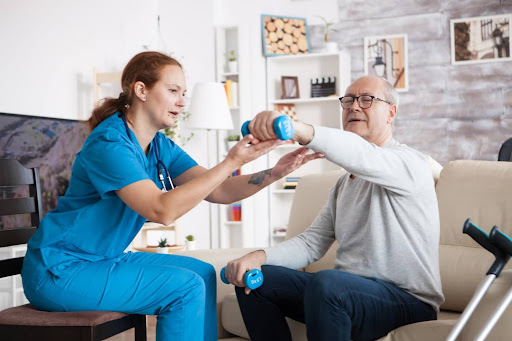Physiotherapist-Approved Ways to Heal Safely at Home

Physiotherapist – Managing a recurring niggle at home or negotiating an injury call for a delicate mix of encouraging recovery and stopping additional injury. Though rest is important, sometimes the real fuel for recovery is proactive and smart activity. The fundamental idea is to pay attention to your body and differentiate between the good pain of muscles working and the acute, alarming anguish of an irritated injury.
This manual presents basic, research-proven techniques for establishing a secure and successful home recovery setting. It is intended to provide you with information, but it is not a substitute for a professional diagnosis. For ongoing or serious ailments, a meeting with a specialist, such as a Physiotherapist Ashford Kent, is absolutely vital to get a customised treatment plan and ensure your path back to recovery is both quick and safe.
Control the PRICE Principle for Acute Injuries
The PRICE principle protects your first line of defence following an acute injury like a sprain or strain in the first 24–48 hours. By using a support or halting the irritating activity, you can help prevent additional damage to the area. Rest the injured leg or joint, but not entirely; soft motion within a pain-free range is encouraged. Ice the region for 15–20 minutes every two hours with a wrapped cold pack to assist to decrease pain and swelling.
Compression with an elastic bandage offers support and restricts inflammation. Keeping the injury elevated at a height above your heart uses gravity to aid in fluid drainage and so reduce oedema, hence quickening the healing process.
Give Gentle Mobility And Painless Movement Top Priority
Relative rest has supplanted the obsolete counsel of complete rest. This entails delicately shifting the wounded region within a pain-free range of movement. For a sore shoulder, this may include gentle pendulum swings. Mild cat-cow stretches can be helpful for a stiff back. This coordinated motion sends blood and nutrients to the damaged tissues, thereby preventing rigidity and promoting healing. The basic guideline is: stop if it induces acute, shooting, or increasing pain. Not to force through severe pain, which can hinder your recovery, the aim is to feel a slight stretch or moderate muscular soreness.
Add Isometric Exercises for Power
Isometric exercises consist of contracting a muscle without movement of the nearby joint. Starting rehabilitation in its first stages, they are a great and secure means to start developing strength. For a knee injury, this would include sitting with your leg straight and softly pushing the rear of your knee toward the floor, pausing for several seconds. For a painful elbow, pressing your palm against a wall without bending the wrist is a great isometric for the forearm. Very low risk of these exercises improves stability and neuromuscular connection; therefore, they form the foundation of early rehabilitation before moving to more dynamic actions.
Slowly Bring The Load Back Through Incremental Workouts
The next move is to progressively add weight and motion once you can do pain-free isometrics. Progressive overload is the idea whereby you progressively expose your body to more demand. Begin with bodyweight exercises using a full, easy range of motion. For instance, development from an isometric glute bridge to a sluggish, regulated bodyweight bridge. You can gently add light resistance with resistance bands or little weights as your confidence and strength grow. The development ought to be gradual and consistent; a typical mistake is overdoing too much too soon, which might reinjure the tissue and greatly postpone your rehabilitation.
Practice Mindful Movement And Body Awareness
Healing is also neurological rather than just physical. Mindful walking, Tai Chi, or mild yoga are some activities that can greatly enhance your body awareness or proprioception. Often compromised following an injury, this is your body’s capacity to perceive its location in space. You recondition your brain to better regulate motions by slowing down and carefully noting the feelings in your body. This reduces the risk of reinjury from an odd movement or misstep. Along with improving your general well-being, mindful movement helps you to control the stress and frustration that may arise with the healing process.
Choose a Comprehensive Strategy
The building blocks you give your body largely determine its capacity to repair damaged tissues. Maintaining good hydration is vital because water is required for every cell process, including nutrient distribution to damaged sites. Moreover, pay attention to an anti-inflammatory diet high in protein for tissue repair, omega-3 fatty acids (found in fish and flaxseeds) to control inflammation, and lots from vibrant vegetables and fruits of vitamins and minerals. Avoiding too much added sugar and processed foods can also help control systemic inflammation, hence producing an internal environment more favourable for fast and effective healing.
Conclusion
An active process mixing intelligent mobility with conscious relaxation, safely healing at home, following guidelines such as PRICE for immediate problems, incremental exercises, and body support with proper nutrition helps you to develop a strong base for recovery. These therapist-approved techniques enable you to gain control over your wellness. Still, the gold standard for negotiating a successful recovery trip is getting the knowledge of a certified physiotherapist for a tailored programme and personal evaluation.








